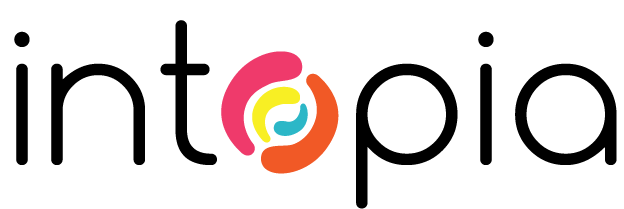Around the world, surveys are conducted that focus on technologies used by people who are blind or have low vision. The largest of these is done by WebAIM in the United States, including their Screen Reader User Survey and Survey of Users with Low Vision. However, there is usually very low representation from Australia and New Zealand.
In April 2021, with support from Blind Citizens Australia, Blind Citizens New Zealand and Next Sense, Intopia conducted a survey of the technology preferences of people who live in Australia or New Zealand and are blind or have low vision. Others relying on similar technology also replied in small numbers. We received a pleasing 156 responses to the survey.
A few disclaimers about the results:
- Totals may not equal 100% due to rounding.
- Total responses for each question may not equal 156 due to respondents not answering that particular question.
- The sample was not controlled and may not represent all screen reader users.
- We hope to conduct additional surveys of this nature again in the future. If you have recommendations or questions you would like us to ask, please email ATsurvey@intopia.digital.
The results below are high-level, preliminary results that we’re releasing for Global Accessibility Awareness Day (GAAD). We’ll be undertaking some detailed analysis in coming weeks, providing an update with further information.
Overview
Our first survey found that desktop/laptop use was nearly twice as popular to mobile device use, and the most common browser used by respondents was Chrome. JAWS was 50% more popular as a primary screen reader than NVDA. This contrasts with WebAIM’s 2019 results, that showed NVDA and Chrome to be about equal in popularity.
Apple iPhone was the mobile phone of choice, with three times the number of users choosing iPhone over Android. These results are very similar to WebAIM’s 2019 (predominantly North American) results.
Results
Demographics
We asked respondents several questions about themselves.
Responses
We had 156 responses:
- 98 from Australia
- 53 from New Zealand
- 5 from other countries
Age
The respondents ages were as follows:
| Age | Number of Responses | Percentage of responses |
| 18 to 25 years | 14 | 9% |
| 26 to 40 years | 30 | 19% |
| 41 to 55 years | 51 | 33% |
| 56 to 70 years | 52 | 34% |
| 71 to 85 years | 7 | 5% |
We were surprised at the low response rate from 18 to 25 year old’s, and will be looking for better ways to reach that cohort in future surveys.
Disability
Asked which disability respondents had, we received the following answers (note that multiple answers could be selected):
| Disability | Number of responses |
| Blindness – have no functional vision | 66 |
| Low vision – eyesight is reduced, limited or impaired and cannot be corrected with conventional glasses or contact lenses | 50 |
| Neurodiverse (e.g. ADHD, autism, dyslexia, dyscalculia) | 17 |
| Deafness or hard of hearing | 17 |
| Motor disability affecting dexterity, reach or hand strength | 15 |
| Deafblind | 14 |
| Reading or learning difficulties | 6 |
| Other | 10 |
Technology use
We asked respondents a number of questions about their primary technology.
Proficiency using the Internet
Respondents were asked to identify their own levels of proficiency with using the Internet:
| Proficiency | Number of responses | Percentage of responses |
| Advanced | 93 | 60% |
| Intermediate | 53 | 34% |
| Beginner | 5 | 3% |
| Not sure | 4 | 3% |
Primary technology
Device most commonly used to access the web:
| Device | Number of responses | Percentage of responses |
| Desktop or Laptop | 94 | 61% |
| Mobile Phone | 44 | 29% |
| Tablet | 14 | 9% |
| Other | 2 | 1% |
Other devices used to access the web
People also commonly used:
- Smart home device
- Smart TV
- Smart watch
Only 6 people said that they don’t use multiple devices.
Operating system
Operating system used on main laptop or desktop device:
| Operating system | Number of responses | Percentage of responses |
| Windows | 116 | 86% |
| Mac OS | 19 | 14% |
Mobile phone
Type of mobile phone used:
| Type of mobile phone | Number of responses | Percentage of responses |
| Apple iPhone | 90 | 73% |
| Android (e.g. Samsung, Oppo, Pixel) | 32 | 26% |
| Other | 2 | 1% |
Access Technology
Access technologies frequently used
Access technology frequently used by respondents (note that multiple answers could be selected):
| Which of the following do you frequently use? | Number of responses |
| Screen reader software | 102 |
| Screen magnifier software | 40 |
| Braille display | 39 |
| Browser text size settings | 31 |
| Operating system settings | 29 |
| Browser Zoom (zooms all page content) | 27 |
| High contrast mode settings | 23 |
| Colour changes using browser settings | 16 |
| Tools that highlight text as it reads | 15 |
| Other | 24 |
Screen reader
Screen reader used most often on a desktop/laptop device:
| Screen reader | Number of responses | Percentage of responses |
| JAWS | 30 | 65% |
| NVDA | 19 | 29% |
| VoiceOver on MacOSx | 6 | 9% |
| Fusion | 4 | 6% |
| Zoomtext | 4 | 6% |
| Other | 2 | 3% |
Web browser
Web browser used most often on a desktop/laptop device with their main screen reader:
| Browser | Number of responses |
| Chrome | 28 |
| Edge | 14 |
| Firefox | 14 |
| Safari | 6 |
| Internet Explorer 11 | 1 |
| Other | 1 |
Screen magnifier
Screen magnifier used most often on a desktop/laptop device:
| Screen magnifier | Number of responses | Percentage of responses |
| Magnifier – comes with Windows | 10 | 33% |
| Zoomtext | 7 | 23% |
| Fusion | 7 | 23% |
| Other | 6 | 20% |
Further analysis of the Assistive Technology Survey will be available in the coming weeks. To be notified when full results are available, subscribe to the Intopia newsletter. A form to subscribe is available on the Intopia home page.
Survey conducted and results produced with the support of Charlii Parker and Adem Cifcioglu.

